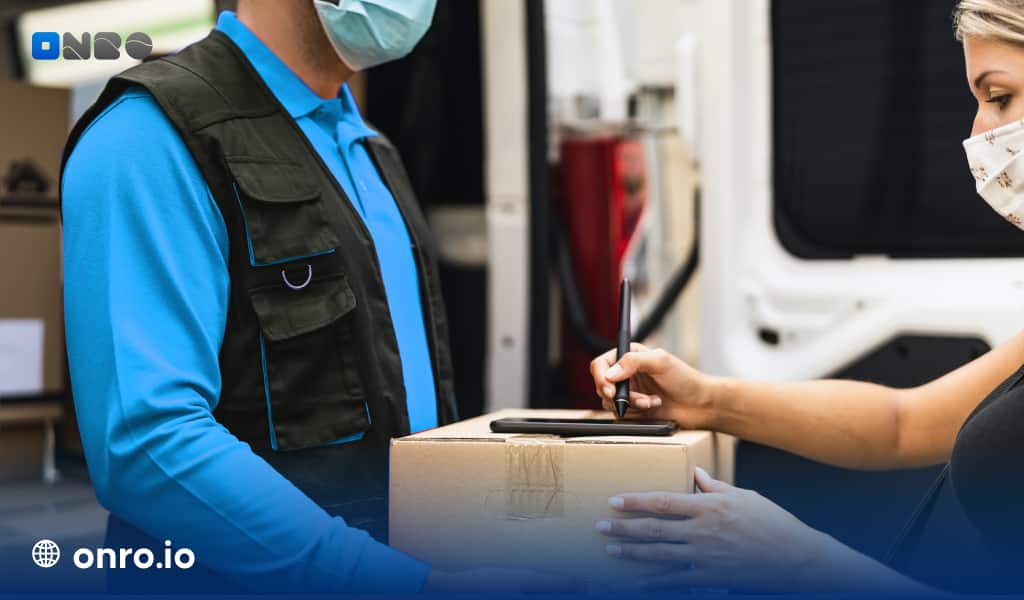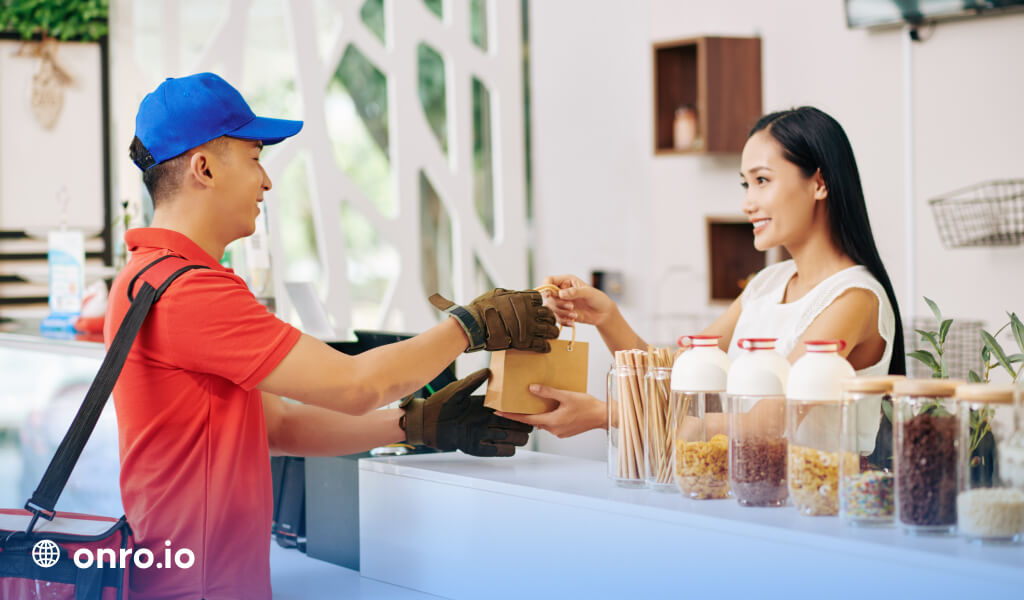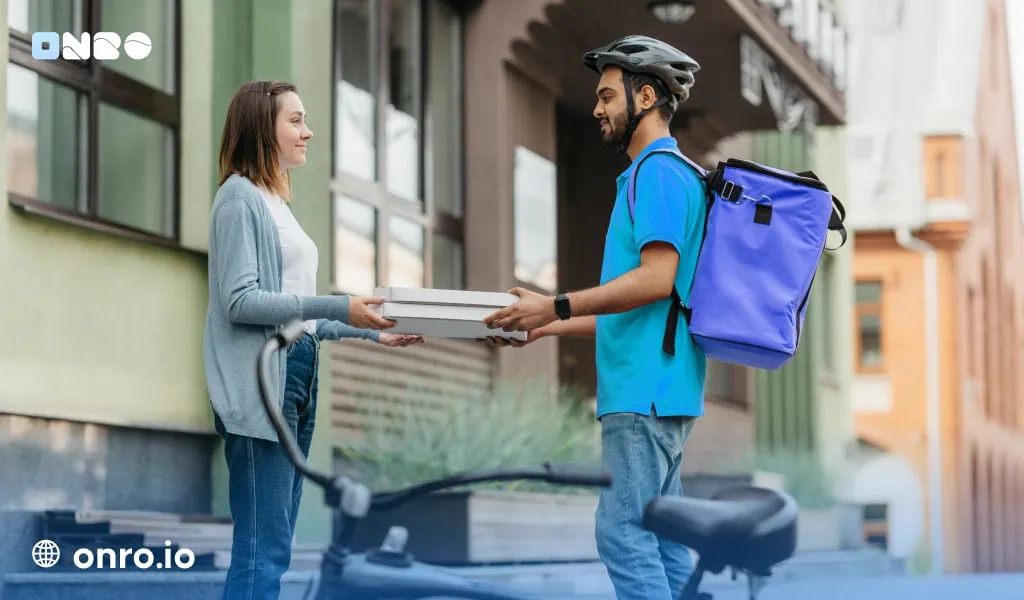The same software development procedures are utilized in an on-demand delivery app development as in any other application development. The fundamental requirements of delivery service must be considered regardless of the choice of software development strategy. This article discusses our team’s experience developing on demand delivery software for on-demand delivery services.
On-Demand Delivery App Development Steps
To better evaluate the development process and make the post more understandable, we divided the on-demand delivery app development process into seven distinct stages. We will continue to investigate these stages.
Step 1: Figure Out A Delivery Business
Developing software for a business begins with getting to know its operations. It is crucial to understand a company’s processes and workflows to adopt the correct software. A document should be compiled with the findings when a survey has been conducted. This document outlines the prerequisites for on-demand delivery.
Eventually, this paper will serve as the basis for technical analysis and the writing of user stories.
Step 2: Identify The Components And Set Up Team
Following the extraction of the requisite requirements for On-Demand Delivery services, a technical team with the necessary competence should be developed. We must first determine the requisite expertise before forming a team. The following Components must be included in the construction of an on-demand delivery app:
- Customer App
- Driver App
- Backend APIs
- Dispatcher Panel
- Admin Panel
- Customer APIs
It is preferable to cover platforms and operating systems with a large user base for your business to reach all possible new customers. To achieve this, you must design on-demand delivery apps for three platforms: Android, iOS, and the web. As a result, you’ll have three different customer apps:
- Customer App (iOS)
- Customer App (Android)
- Customer Web App
Additionally, some of your customers may be businesses with their software, such as restaurants or online stores. These businesses can use the API to send orders to your platform. As a result, Customer APIs can be used to construct on-demand delivery apps to cater to this group of customers.
Because most devices are Android or iOS, create two separate versions for these two operating systems and distribute them through the App Store and Play Store.
Customer and driver applications and other apps like dispatcher and admin panel require a backend developer in on-demand delivery app development. Backend APIs are responsible for a portion of an app’s performance. Of course, some features may necessitate web sockets or other real-time technologies, which require the proper backend infrastructure.
The dispatcher is typically a web app utilized by your company’s operators to deliver orders on desktop computers.
The admin panel is a web app that’s been created to manage the business.
Now, based on the components above, it can be assumed that personnel with the following expertise will be required for the creation of on-demand delivery apps:
- Two Android developers (for Customer App and Driver App)
- Two iOS developers (for Customer App and Driver App)
- Two Front-End Developers (for Customer Web App and Dispatcher Panel)
- Two Backend Developers (for APIs and Admin Panel)
However, because every development team needs at least one UI/UX designer and a product manager, two more should be added to the list:
- One product manager
- One UI/UX designer
So you’ll need a total of ten professionals to design an on-demand delivery app.
Points To Consider When Forming A Team
It is preferable to take interviews with people seriously when employing technical staff. If you are looking for technical personnel, it is recommended that you seek assistance from someone with software engineering expertise and experience in the field of programming. You will not require assistance from others if you have this knowledge and experience. The reason for highlighting this is that using non-professionals can lower the quality of the final project. These individuals may create poor codebases, resulting in a not scalable or extendable product. An inferior product will raise your costs in the long run.
So, if you intend to utilize unskilled personnel to design on-demand delivery apps to save money, keep in mind that you can end up paying more in the long run.
Step 3: Choose A Software Development Methodology
The third step in developing an on-demand delivery app is deciding on a software development method. There are different approaches to this process. Some of the methodologies are traditional, others are newer and more extensively utilized today. Scrum is one of the most unique and fastest of them. Scrum is an efficient Agile approach for product development.
Members of the product development team move things ahead at the same time in the scrum technique. Work is frequently scheduled weekly or biweekly, with retrospective meetings held after each sprint to review the team’s performance and remove roadblocks to advancement.
Of course, selecting a software development approach should be done in consultation with members of the technical team. It’s also worth considering what methods the technical team members have worked with before.
Step 4: Compose User Stories
Writing user stories is the fourth phase in developing an on-demand delivery app. You begin developing user stories at this moment, based on the document created in the first step, from the perspective of users utilizing the software. A user story is, for example, The registration of users in the app. Completing a user profile, for example, is a user story. In reality, each user story for any application can be a Minor / Major Feature.
You can use the user stories in Scrum when extracted independently for all of the components described in the second phase. Written user stories are usually separated into parts and implemented over numerous sprints if they are significant.
Each user story should be designed, implemented, and tested in the same sprint in the Scrum process.
Step 5: Determine The MVP
The fifth phase is to define the MVP (Minimum Viable Product). Because most on-demand delivery businesses are startups, starting with a basic version with only the most essential functions when developing an on-demand delivery app is recommended. Mvp development has several key benefits:
- Reduce the expense of implementation at the start.
- Implementation time is cut in half.
- Testing and receiving feedback, as well as making quick changes
Keep in mind that you can test your business in less time by creating an MVP. Get input from users and make changes more rapidly if necessary.
After a few iterations, your product will be a good fit for your company and market, and you can start developing the next set of features.
Step 6: Begins On-demand Delivery App Development
The development of an on-demand delivery app forms the sixth phase. Work on the MVP product begins at this time. Technical analysis is the most crucial task completed at the start of each user story’s implementation. For the product development team, the technical analysis specifies the implementation. Meetings with the product manager to assess user stories are optimal, and all development team members should be present.
During the analysis sessions, a dedicated user story document (typically prepared by the product manager) can aid the UI / UX designer in implementing the designs more quickly and precisely.
Additionally, by reading and studying this document, the developers of specific parts make the implementation faster and more efficient.
Backend developers frequently play a significant role in analyzing on-demand delivery apps because they are the ones who create API structures and tell client developers what to do.
Writing tests simultaneously as writing code is the best idea to remember when writing code. Writing the test can make future development and reading of the code much more accessible.
At the end of each user story, the designer or product manager must perform a quality assurance test. The purpose is to find and repair user story issues at the end of each user story so that each user story file can be closed when it’s time to implement it.
Having an executable version at the end of each user story is preferable when developing on-demand delivery apps.
Step 7: Production & Test
Testing in the production environment is the final step in developing an on-demand delivery app. A well-structured strategy is the best way to proceed with this step. You must test and receive feedback on your generated product in a real-world setting with real people. To do so, they usually select a small number of people and make the app available to them.
You could, for example, install the driver app on the phones of five drivers and require them to be online so they can accept and execute orders provided to them. You can also give the customer app to 50 individuals or advertise in a specific location to test it.
Test the dispatcher yourself or at least one operator by sending actual orders to drivers via the dispatcher. You will most likely use the admin panel; therefore, you can test it thoroughly.
It’s critical to keep track of the product’s bugs and UX issues during this process. The technical team should prioritize and resolve these bugs and issues.
After completing the process, you will obtain an MVP product suitable for business and market and running smoothly. Users adore it, and you’re now ready to begin promoting to expand user numbers.
On-Demand Delivery App Development Costs
Given that we looked at the specifics of on-demand delivery app development and discussed the number of professionals needed in the previous sections, calculating the expenses is not difficult and only requires estimating the time and salary of team specialists.
Of course, it should be noted that costs vary by country and are usually determined by the salaries of specialists in that country.
If we assume that an expert’s typical price is $ 3,000 and that your MVP product will be completed in six months, you will pay the technical team $ 180,000 to construct an essential product.
Of course, the construction of an on-demand delivery app does not finish with creating an MVP, and now it is up to the development team to get started. It is predicted that developing a complete solution that meets all of your business demands will cost more than $1 million.
There are additional costs associated with developing an on-demand delivery app. The following are some of them:
Development Team Collaboration Tools Cost
The product development team needs Jira or Trello for project management and task management and chat and group chat software such as Slack and Google Meet. Although some of these tools have free versions for small teams, they are usually limited, and you may need to use subscription plans, which will incur a price.
Servers, Domains, and Hosting Costs
To test and publish apps, you’ll undoubtedly require servers, domains, and hosts. Your on-demand delivery app development needs are frequently not satisfied by free plans, and you must pay for them.
Other Infrastructure Costs
Other infrastructures, such as a Map, SMS Panel, and Payment Gateway must be paid for the product to function correctly. These expenses are determined by the service you use and the amount of time you spend using it.
Conclusion
The development of an on-demand delivery app faces a wide range of problems. Technical and product team management is the most crucial. Aside from the high costs of establishing an on-demand delivery software from the roots up, developing a product from scratch entails many risks. Your business may collapse if your business and market demands are not effectively studied and implemented or if non-specialists fail to establish a suitable product infrastructure.
Using goods already established as an alternative to on-demand delivery app development can lower your risk and substantially reduce your startup costs. Check out the Onro on-demand delivery software, which is an all-in-one on-demand delivery solution, and that you register for a demo so that we can contact you as soon as possible.
Try Onro for Free
Get your free access to the Onro White-label On-demand Delivery Software.
Originally published December 24, 2021 1:52 pm, updated Saturday, 26 August 2023.



